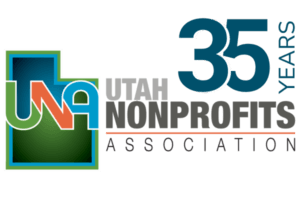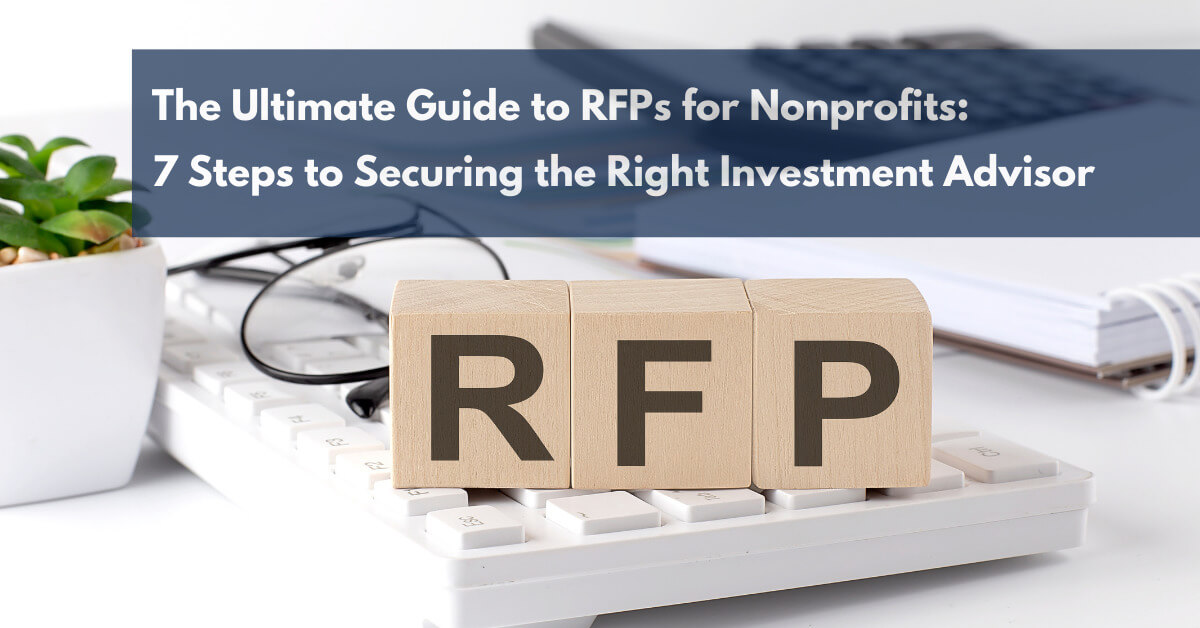Selecting the right investment partner is critical for nonprofits to ensure financial stability and long-term growth. A well-executed Request for Proposal (RFP) process can help your organization identify the best fit by fostering transparency, encouraging competition, and ensuring a thorough evaluation of candidates. However, managing an RFP requires careful planning, clear communication, and attention to detail. This article outlines the essential steps and key considerations for creating and running an effective RFP (and even includes a sample RFP template), while also highlighting common pitfalls to avoid and alternative approaches to streamline the process. Whether your goal is to establish a new investment program or find a more aligned advisor, these strategies will help you navigate the selection process with confidence and efficiency.
Steps to Creating and Running an RFP
To ensure your nonprofit's RFP process is effective and well-structured, follow these key steps:
Step 1: Craft a Clear and Comprehensive RFP Document
This document should provide potential advisors with background about your organization including its mission, financial goals, and investment needs. Transparency is key—let candidates know why you are issuing an RFP, whether to establish a new endowment, replace an existing advisor, or address performance challenges. Including this context will help advisors tailor their proposals to your specific situation.
Step 2: Include Targeted Questions
Your RFP should include questions designed to gather relevant information from each advisor. Cover topics such as their experience with nonprofits, key staff, investment philosophy, additional services, and fee structures. The RFP template below offers a suggested set of questions to use to construct an RFP.
Step 3: Outline the Timeline and Guidelines
Set clear expectations by providing deadlines for proposal submissions, dates for finalist presentations, and the anticipated timeline for making your final decision. Include submission requirements and detailed contact information to ensure smooth communication. Consider setting a length limit for proposals to maintain focus and readability. This will ensure that submissions are concise and relevant, avoiding the challenge of reviewing overly lengthy, cumbersome documents.
Step 4: Identify and Invite Firms
Once the RFP is complete, invite firms that align with your nonprofit’s needs. Look for those with experience managing nonprofit portfolios, a strong fiduciary commitment, and a track record of aligning investment strategies with organizational missions. Inviting a diverse set of advisors can enhance competition and ensure you receive a variety of perspectives.
Step 5: Evaluate Proposals
Screen proposals to ensure they meet basic requirements. Then, use a standardized scorecard to rank proposals based on experience, investment approach, and fee transparency. This provides a fair and consistent assessment.
Step 6: Conduct Finalist Interviews
Select two to four finalists for in-depth interviews. These sessions will allow you to assess their compatibility with your organization and delve deeper into their investment philosophies and communication styles. Focus on their ability to provide tailored solutions, support governance needs, and build strong relationships with your board and staff.
Step 7: Select Your Investment Partner
Involve key stakeholders, such as board members and finance committee representatives, to make the final decision. Consider both quantitative evaluation results and qualitative factors, such as the advisor’s potential to serve as a collaborative partner.
Pitfalls to Avoid When Issuing an RFP
While an RFP can be an effective tool for selecting an investment partner, there are common pitfalls that organizations should avoid to ensure the process is smooth and successful:
- Winging It: A clearly defined RFP process is essential for success. Outline your objectives for hiring a new investment advisor, craft a detailed questionnaire, curate a list of qualified firms, and establish a timeline for responses, reviews, and final selection. Without a structured process, your organization risks losing focus and efficiency.
- Failing to Establish an RFP Committee: It is critical to assemble a dedicated committee to oversee the RFP process. Keep the group small (three to five members), include representatives from various organizational stakeholders, and appoint a leader to ensure the process stays on track.
- Not Pre-Qualifying Candidates: Inviting too many firms can overwhelm your committee and complicate side-by-side evaluations. Conduct initial research and screenings to identify firms that align closely with your organization’s needs, and limit the list to five or fewer candidates to ensure quality responses.
- Asking Too Many Questions: Be strategic about the questions you include in your RFP. Focus on the most critical areas: experience with nonprofits, investment philosophy, and fee structure. Overloading your questionnaire can generate generic or incomplete responses, making the evaluation process cumbersome.
- Lacking an Evaluation Scorecard: Comparing proposals without a standardized evaluation framework becomes challenging. Use a scorecard to assess responses based on consistent criteria. This ensures fairness, minimizes bias, and makes identifying the top candidates for interviews and final selection easier.
Avoiding these pitfalls can save time, reduce frustration, and increase the likelihood of finding the best investment partner for your nonprofit.
An Alternative Approach to the RFP Process
If the complexity and time commitment of an RFP seem daunting, a simplified approach may be a better fit. By interviewing a small, pre-selected group of qualified advisory firms, your nonprofit can streamline the selection process while still making an informed decision. This method focuses on dynamic, interactive discussions that allow you to assess each advisor’s expertise, approach, and alignment with your organization’s goals.
These interviews will emphasize nonprofit experience, fiduciary integrity, investment philosophy, and fee transparency. Additionally, evaluate the advisor’s communication style and ability to provide additional resources, such as support with governance documents. This approach allows your organization to focus on selecting the best partner without the added complexities of a formal RFP process.
Download Our Investment RFP Template
Whether you issue a formal RFP or take a simplified approach, having the right tools can make all the difference. eCIO offers a customizable RFP Template and Evaluation Scorecard to help your nonprofit streamline the process and make confident decisions.
By following these guidelines, your nonprofit can successfully navigate the selection process and find an investment partner who aligns with its mission and financial goals. Whether through a formal RFP or a more flexible approach, the key is to focus on what best suits your organization’s unique needs.
About the Author
eCIO serves 100+ nonprofits nationwide, providing institutional, low-cost investment solutions tailored to their needs. With decades of experience, the firm helps nonprofits manage their financial resources through customized strategies, guidance, and technology-driven solutions. More than investment managers, eCIO is a dedicated partner in its clients’ missions.
eCIO, Inc. is a Registered Investment Advisor registered with the Securities and Exchange Commission (SEC). Registration as an investment adviser does not imply a certain level of skill or training, and the content of this communication has not been approved or verified by the United States Securities and Exchange Commission or by any state securities authority.
The information contained in this material is intended to provide general information about eCIO, Inc. and its services. It is not intended to offer investment advice. Investment advice will only be given after a client engages our services by executing the appropriate investment services agreement. Information regarding investment products and services are provided solely to read about our investment philosophy and our strategies. You should not rely on any information provided on our web site in making investment decisions.
Market data, articles and other content in this material are based on generally-available information and are believed to be reliable. eCIO, Inc. does not guarantee the accuracy of the information contained in this material.

